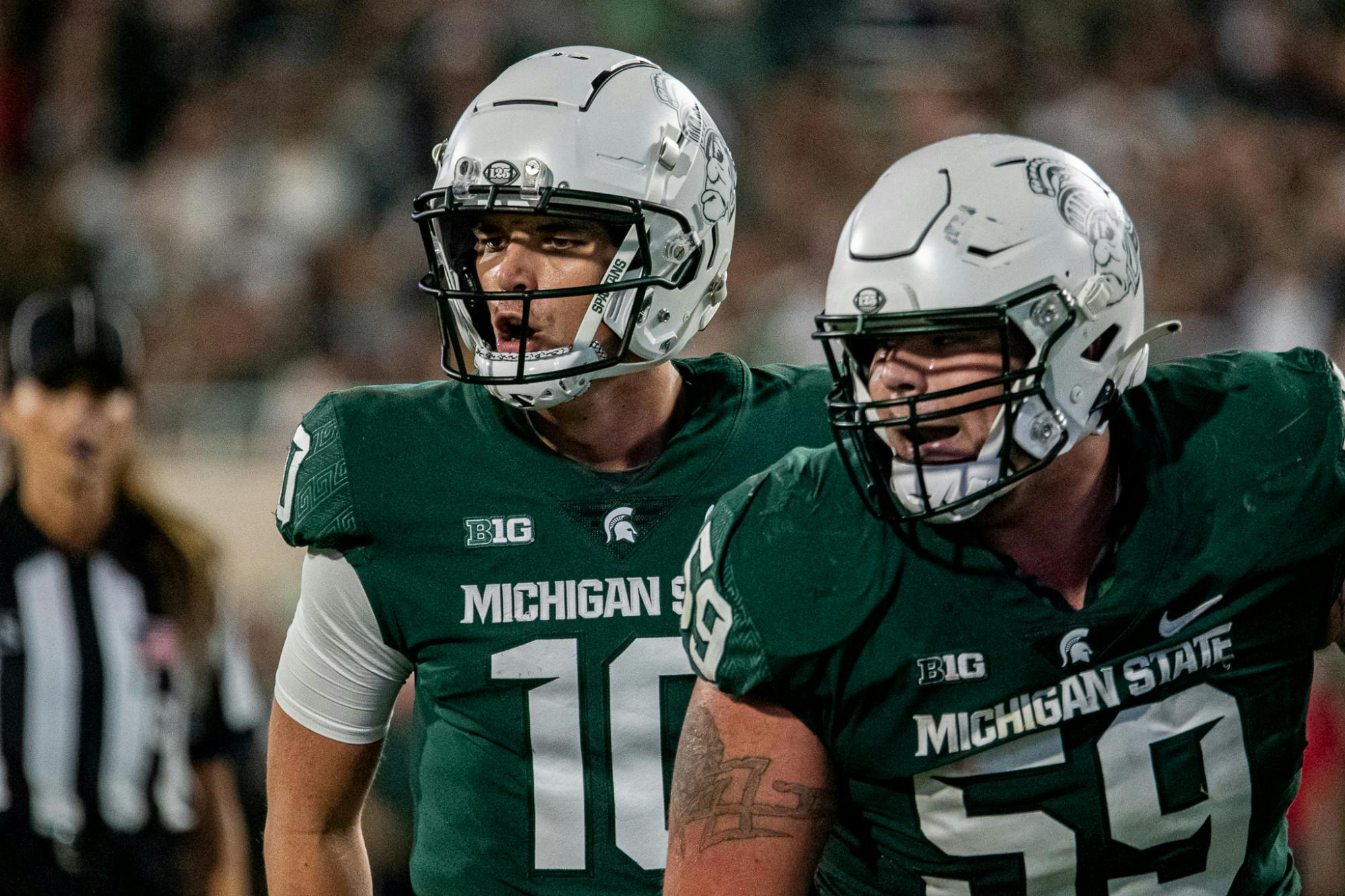Trick plays are one of the many things that makes football, and all sports for that matter, fun.
Fans love them, players love them, and even coaches like them, at least when they work. They are risky plays that only gutsy coaches will call.

Redshirt sophomore quarterback Payton Thorne calls a play during the Spartans' 48-31 homecoming win against Western Kentucky on Oct. 2, 2021.
Trick plays are one of the many things that makes football, and all sports for that matter, fun.
Fans love them, players love them, and even coaches like them, at least when they work. They are risky plays that only gutsy coaches will call.
Wildcat, flea-flicker, end-around, fake field goals are just a few common tricks in the glossary of football plays. However, the flea-flicker specifically, a relatively simple play by design with a halfback pitch back to the quarterback, has become engraved into the Michigan State offense.
It is one thing for a team to run a trick play once or twice a season, let alone the same play. It's another thing to run the same trick play numerous times and to find success every single time.
That’s what Michigan State has done.
The Spartans have literally taken the flea-flicker and made it into an almost ordinary play on Offensive Coordinator Jay Johnson’s play sheet.
“It’s a play,” MSU Head Coach Mel Tucker said after Saturday’s win over Rutgers. “It's like running inside zone or outside zone or running counter. It’s another play. If they don’t cover it then it's going to be open.”
Tucker is right. For him and Johnson who came over together from Colorado, it is just another play. In their last years at Boulder before coming to MSU, Tucker and Johnson ran a flea-flicker versus Nebraska from Colorado’s own four yard line and converted for a 96-yard touchdown.
Now with Michigan State, the flea-flicker has been brought over to East Lansing and it does not appear to be going away anytime soon. The Spartans have attempted three separate flea-flickers this season and have been successful on all three attempts.
It started week two versus Youngstown State. Starting the game with the ball, sophomore quarterback Payton Thorne launched a 75-yard flea-flicker touchdown to junior wide receiver Jayden Reed. It was MSU’s second consecutive week scoring on the first play of the game.
Flea-flickers: 1 for 1.
Then in week four, for the first time this season, the Spartans’ offense was not playing well. Nebraska’s defense had a great game plan and even better execution that nearly gave MSU a loss. But, the flea-flicker was still effective. It was Thorne to Reed again, this time from 35 yards out for the game’s first touchdown.
Flea-flickers: 2 for 2.
Most recently, Michigan State was successful again on the flea-flicker in week six. Following a Rutgers field goal that cut MSU’s lead to one point, the Spartans needed a quick answer to extend the lead back to a more comfortable position.
So, why not turn to the bread and butter? This time, Thorne connected with his other big-play wideout in redshirt junior wide receiver Jalen Nailor on the first play of the drive for Nailor’s third touchdown of 63 or more yards on the day.
Flea-flickers: 3 for 3.
“It is kind of just in our play action scheme of things,” Johnson said. “It’s there. But obviously for that to be successful, you have to have the receivers blocking on the edges and you got to have the guys doing things up front.”
It is a collective effort to pull off such a play; it is not just about the quarterback, running back, and wide receiver. Flea-flickers take time to develop. The pass protection needs to hold up and wide receivers need time to get down field.
Having a capable running game is a must too. It is even better when you have the nation’s leader in rushing yards in junior running back Kenneth Walker III. Faking the run gets the second level defenders to bite, thinking they have to go toward the ball to stop Walker. That’s when MSU’s speedy receivers blow by the befuddled opposing defensive backs.
Support student media! Please consider donating to The State News and help fund the future of journalism.
“I’ve always felt very good about our talent level at certain spots,” Johnson said. “I think it is the combination of everything ... I’ve always felt good about our skill players and their explosiveness, but it’s the other guys that are doing their parts that is helping that come along.”
Interestingly enough, the Spartans’ flea-flickers have come on alternating games, never consecutive ones. By definition, MSU fans perhaps should not expect a flea-flicker this Saturday versus Indiana, though the stars are aligning perfectly for another trick up Michigan State’s sleeve for Oct. 30 versus Michigan.